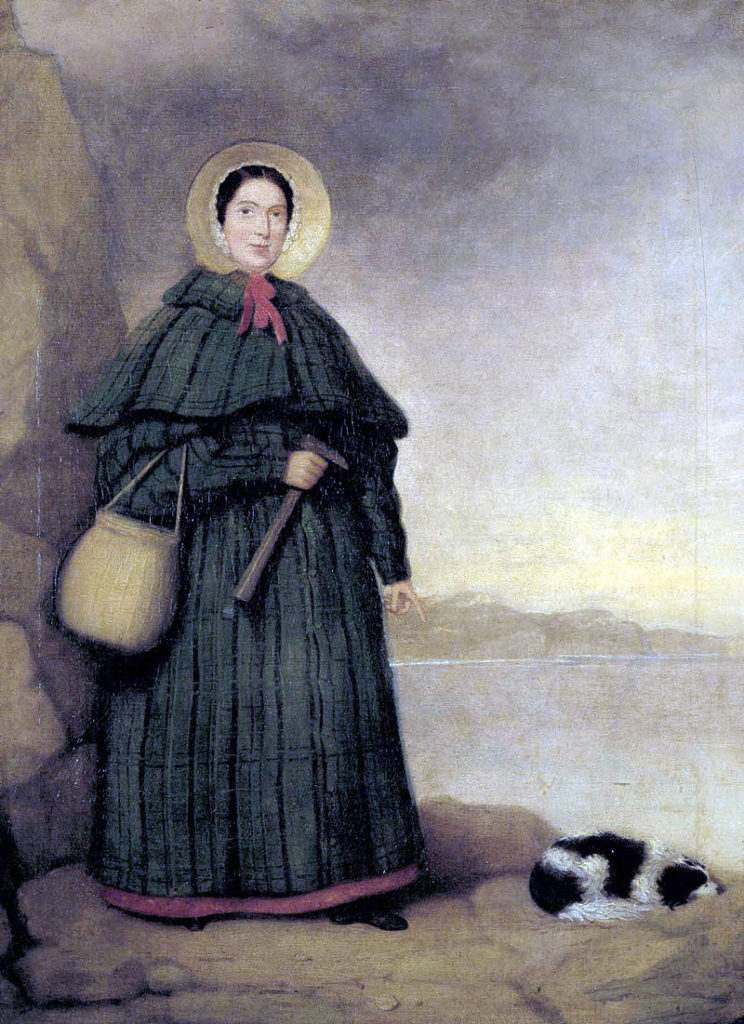Heroes in History: Mary Anning

A trailblazer for palaeontology who excavated prehistoric fossils and helped broaden scientific study
Born into poverty on 21 May 1799, Mary Anning had to work hard from a young age. She didn’t have a formal education and was only taught to read at Sunday school. Raised in the seaside resort of Lyme Regis in Dorset, Mary and her older brother Joseph made a living selling ammonoid fossils to holidaymakers at their father’s waterfront stall.
Her life changed in 1811 when Joseph noticed a skull embedded in rock. Curious, the siblings chipped away until an entire skeleton was uncovered. Unbeknown to them, this was the first ever discovery of an ichthyosaurus, a marine lizard from the Triassic period.
There was a huge fanfare over the find, which only escalated when famous surgeon Everard Home wrote a scientific paper on the ichthyosaurus three years later. The fossil was found at an area now known as the Jurassic Coast, a part of Dorset that was underwater when dinosaurs roamed the Earth. The cliffs where Anning grew up were filled with fossils from the Jurassic period, and she would often scour the beach after storms when rocks had been eroded or dislodged by the weather.
Anning noted down every find she made, and after failing to find any new fossils for over a year, in 1821 she made her next discovery, unearthing three more ichthyosaur skeletons. This was followed two years later by an even more impressive find – a complete plesiosaur skeleton. This was so extraordinary that many leading scientists declared it a fake, unwilling to believe that an uneducated 24-year-old could find such remarkable remains. Additionally, society at the time was highly religious and many rejected these discoveries as they conflicted with the teachings of the Bible.
Despite the setback, Anning continued to make more startling revelations. She uncovered belemnoidea fossils, squid-like creatures that were among the first prehistoric animals discovered that had the ability to squirt ink. Anning also dug up fossilised faeces, which helped experts understand the diets of prehistoric creatures. But her biggest finding of all was the first complete skeleton of a pterosaur in 1829.
All of Mary Anning’s discoveries helped influence the study of palaeontology as scientists began to take an increased interest in fossilised animals and plants. Her work also prompted people to question the history of the Earth in more detail as well as encouraging girls and those from poorer backgrounds by proving that they could succeed in scientific study, a profession dominated by wealthy upper-class men. She died in her hometown in 1847 from breast cancer, aged just 47. A stained glass window in a local church was made in her memory and is still there today.
For more science and technology articles, pick up the latest copy of How It Works from all good retailers or from our website now. If you have a tablet or smartphone, you can also download the digital version onto your iOS or Android device. To make sure you never miss an issue of How It Works magazine, subscribe today!
Other articles you may like:
Heroes of Space: Katherine Johnson
Heroes of science: Marie Curie





